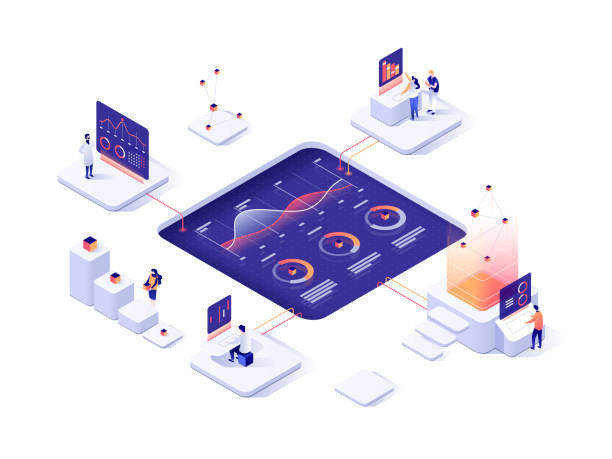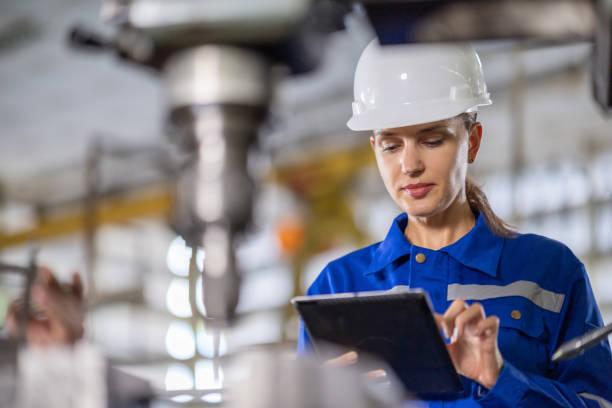Divulging What’s in Store: An Extensive Analysis of Kinetic Analysis Technology
Introduction

In the steadily developing scene of mechanical progressions, one region that has been picking up significant speed is kinetic analysis technology. This state-of-the-art field is committed to changing how we comprehend and interface with different cycles, from organic responses to modern tasks.
Grasping Kinetic
At its center, kinetics is the analysis of rates and instruments of compound responses. Kinetic analysis, consequently, includes the assessment of these unique cycles over the long run. Conventional strategies frequently depicted reactions at explicit time focuses, offering restricted knowledge. Kinetic Analysis Technology then permits us to notice and measure changes ceaselessly, offering a more nuanced comprehension of the hidden instruments.
The Underpinnings of Kinetic Analysis Technology
Spectroscopy Methods
For quite some time, spectroscopy has been the foundation of kinetic analysis. Present-day technologies, for example, time-settled spectroscopy, empower analysts to catch constant information on sub-atomic changes during responses. Methods like NMR (Atomic AttrKinetic Reverberation) and FTIR (Fourier Change Infrared Spectroscopy) have become crucial apparatuses for unwinding the complexities of compound kinetics.
Mass Spectrometry
Mass spectrometry, combined with cutting-edge computational strategies, gives priceless kinetic data. Analysts can follow the movement of responses dissecting the mass-to-charge proportion of particles and clarifying response pathways and middle species.
Surface Plasmon Reverberation (SPR) and Biosensors
In natural chemistry, SPR and biosensors are vital in kinetic analysis. These technologies consider constantly checking biomolecular communications, offering experiences into restricting kinetics, affinities, and thermokinetics. This has significant ramifications in drug revelation, where understanding the kinetics of medication target cooperation is vital.
Microfluidics and Lab-on-a-Chip Frameworks
Microfluidics has upset kinetic analysis giving a controlled climate to responses for a limited scope. Lab-on-a-chip frameworks incorporate different logical devices, working with high-throughput kinetic analysis with insignificant example volumes. This has broad applications in fields ranging from drugs to natural observation.
Applications Across Disciplines
Drug Industry
Kinetic Analysis Technology was introduced for the second time in drug improvement. The ability to screen restricting Kinetic between drug applicants and their objectives continuously facilitates improving interaction. This speeds up drug disclosure as well as enhances the adequacy and explicitness of drug interventions.

Substance Design and Modern Cycles
In substance design, understanding response kinetics is fundamental for streamlining modern cycles. Kinetic analysis supports planning more effective reactors, limiting waste, and amplifying yield. This has significant ramifications for businesses going from petrochemicals to food creation.
Natural Checking
Kinetic analysis is vital in ecological science, empowering specialists to follow the paces of substance changes in environments. This is instrumental in grasping poison debasement, supplement cycling, and the general strength of biological systems. Continuous checking gives a powerful viewpoint, considering ideal mediations in light of natural changes.
Materials Science
In materials science, kinetic analysis is critical for understanding stage changes, precious stone development, and debasement processes. This information is essential for planning materials with explicit properties, whether in improving cutting-edge hardware or creative biomaterials.
Difficulties and Future Bearings
While Kinetic Analysis Technology holds a monstrous commitment, it isn’t without its difficulties. The intricacy of numerous responses and the requirement for high accuracy in estimations presents enormous obstacles. Moreover, incorporating various scientific methods into a vital kinetic analysis stage requires an interdisciplinary joint effort.
Information incorporation and normalization
The assorted array of strategies utilized in kinetic analysis creates tremendous datasets. Normalizing information configurations and incorporating data from various sources present difficulties that analysts effectively try to resolve. The advancement of open-access data sets for kinetic information could smooth out this interaction, cultivating cooperation and speeding up research.
Instrumentation and computerization
Headways in instrumentation and mechanization are crucial for the far-reaching reception of kinetic analysis. Scaled-down, easy-to-understand gadgets that offer high awareness and explicitness are expected to democratize access to this technology. Also, robotization can upgrade information obtaining and handling, diminishing the burden on specialists and limiting human blunders.

Interdisciplinary joint effort
The genuine capability of kinetic analysis lies in its capacity to provide a comprehensive comprehension of kinetic cycles. Accomplishing this requires a consistent joint effort between physicists, researchers, designers, and information researchers. Separating conventional storehouses and encouraging interdisciplinary analysis drives will be vital to conquering difficulties and opening new horizons in kinetic analysis.
Final Words
Kinetic Analysis Technology remains at the cutting edge of logical and mechanical development, offering exceptional bits of knowledge into kinetic cycles across different disciplines. From changing medication disclosure to streamlining modern processes and propelling comprehension, we might interpret ecological elements; the applications are tremendous and extraordinary.
| Aspect | Description |
|---|---|
| Definition | Kinetic Analysis Technology involves the continuous monitoring and analysis of dynamic processes, offering a real-time understanding of reaction rates and mechanisms. |
| Key Techniques | – Spectroscopy (NMR, FTIR) – Mass Spectrometry – Surface Plasmon Resonance (SPR) – Biosensors – Microfluidics and Lab-on-a-Chip Systems |
| Applications | – Pharmaceutical Industry: Drug development and optimization – Chemical Engineering: Industrial process optimization – Environmental Monitoring: Ecosystem dynamics – Materials Science: Phase transitions, crystal growth |
| Challenges | – Handling large datasets – Standardizing data formats – Integrating information from different sources – Instrumentation precision and automation – Interdisciplinary collaboration |
| Future Directions | – Development of open-access databases for kinetic data – Advancements in instrumentation and automation – Interdisciplinary collaboration for holistic understanding |
| Impact on Industries | – Accelerates drug discovery in pharmaceuticals – Optimizes industrial processes in chemical engineering – Enhances environmental monitoring – Improves materials design in materials science |
Faqs
What is Kinetic Analysis Technology, and how can it differ from customary strategies?
Kinetic Analysis Technology is a high-level way to deal with concentrating on the rates and components of kinetic cycles, especially in synthetic and natural frameworks. Unlike customary techniques that depict responses at an explicit time focus, kinetic analysis technology permits constant checking of changes after some time. This offers a more point-by-point and nuanced comprehension of the hidden instruments driving a response, empowering scientists to investigate the complex subtleties of previously unavailable cycles.
What are the essential procedures utilized in kinetic analysis technology?
A few procedures assume an urgent part in kinetic analysis. Spectroscopy techniques, like NMR and FTIR, offer bits of knowledge into substance responses observing changes in sub-atomic properties over the long run. Mass spectrometry gives data about the mass-to-charge proportion of particles, helping with response movement. Biosensors and surface plasmon reverberation (SPR) are imperative in examining biomolecular collaborations, while microfluidics and lab-on-a-chip frameworks empower controlled, high-throughput kinetic analysis.
How does kinetic analysis technology influence the drug business?
In the drug business, Kinetic Analysis Technology has upset drug improvement. The continuous observation of associations between drug applicants and their sub-atomic targets speeds up the advancement interaction. This speeds up the medication revelation timetable and works on the accuracy and adequacy of drug medications. Understanding the kinetics of medication target communications is significant for growing more intense and specific helpful specialists.

